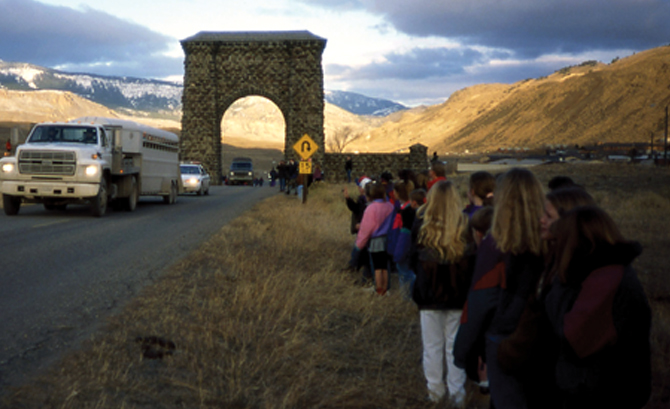
“Wolves arrived in Yellowstone National Park via truck on January 12, 1995,” according to the National Park Service.
Only a couple of decades following their reintroduction, the Yellowstone wolves have already accomplished remarkable feats, some claim. They reportedly rounded grazing herds back into their most natural territories, and in doing this, the native foliage returned,
Elk make up about 90 percent of the Yellowstone wolves’ diet in the winter months. In the video “How Wolves Change Rivers,” the narrator refers to elk as “deer,” but according toSustainable Man that is simply a semantics issue.
“There are ‘elk’ pictured in this video when the narrator is referring to ‘deer.’ This is because the narrator is British and the British word for ‘elk’ is ‘red deer’ or ‘deer’ for short. The scientific report this is based on refers to elk so we wanted to be accurate with the truth of the story.”
After Yellowstone National Park reintroduced wolves into the wilderness, a trophic cascade occurred, according to the narrator of the film. Their return benefited everything from the bald eagle to the river’s flow. George Monbiot explains what a trophic cascade is, and how the Yellowstone wolves transformed the park’s ecosystem all the way down to its meandering riverbeds.
According to the National Parks Service, there is no way to know exactly how significantly the wolves’ return will impact or has impacted Yellowstone. Some scientists, like Arthur Middleton, who has in the past received funding for research from the Wyoming Animal Damage Management Board and the Wyoming Governor’s Big Game License Coalition,have opinions that oppose the idea that the wolves made such an impact. So far, according to the NPS, the impact that the wolves have made has been surprising in many ways.
“Preliminary data from studies indicate that wolf recovery will likely lead to greater biodiversity throughout the Greater Yellowstone Ecosystem. Wolves have preyed primarily on elk and these carcasses have provided food to a wide variety of other animals, especially scavenging species. They are increasingly preying on bison, especially in late winter. Grizzly bears have usurped wolf kills almost at will, contrary to predictions and observations from other areas where the two species occur. Wolf kills, then, provide an important resource for bears in low food years. Aggression toward coyotes initially decreased the number of coyotes inside wolf territories, which may have benefited other smaller predators, rodents, and birds of prey.”
According to Defenders of Wildlife, as the wolves return, the same old fears that led humans to nearly eradicate them are coming back too. Still, according to this same group, in areas outside of Yellowstone where the wolves are thriving in their comeback, less than one percent of livestock deaths have anything to due with wolves.
Yellowstone Wolves Changed The Entire Ecosystem, Even The Geography — Here’s How.
